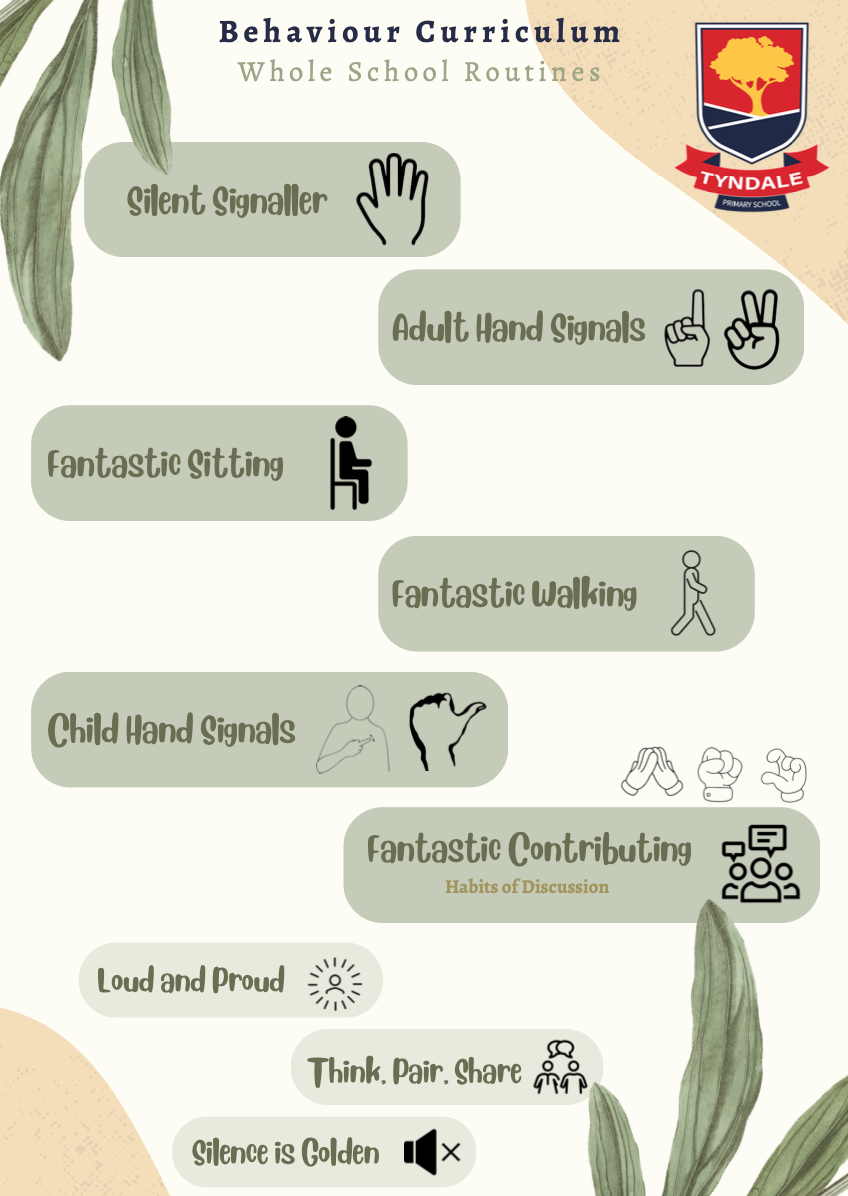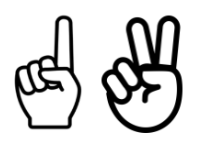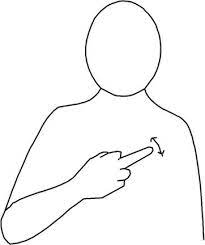Whole School Routines
Our Whole School Routines provide all children and adults with consistency across the school. Our routines promote making good choices easy and the poor choices hard.
Our Whole School Routines
Why?
-
Our Whole School Routines are particularly powerful because human attention is so heavily limited—we can really only attend to one thing at a time. As a result, when a routine is in place, children end up needing to think less about the process of their learning, and so can think more about the content of their learning. This is important, because what our students attend to is what they end up thinking about. And what they think about is ultimately what they end up learning.
-
Prevent confusion or distractions in lessons or around school when different adults have different routines and expectations.
-
Support all children to manage their cognitive load and ego-depletion through automating our whole school family routines and expectations.
-
Free up working memory to focus on the learning rather than what children should be doing (e.g. how to sit, listen to others, write the date, ask for help, what you do at the start of a lesson, what to do when finished).
What are our routines?

Silent Signaller (staff hand)
Our staff use a silent signaller to gain the attention of the class. This is done by raising one hand. When children see this, they stop what they are doing, raise their hand to show you have seen and tap the person next to you on the shoulder if they haven’t seen. Finally, children wait until everybody is quiet and listen to what the adult has to say in Fantastic Sitting.
We use this to ensure all children are clear when an adult requires their attention no matter where they are in the school or what adult requires their attention. This routine also prevents adults talking over children or raising their voices.
Fantastic Sitting
-
Sit up straight: good posture, back against the back of the chair
-
Track the speaker: showing others their ideas matter, and they are valued.
-
Active listening: encouraging the speaker, nodding, smiling and using ABC when they speak.
-
Respect others around you: empty hands.
Fantastic Sitting enables children to focus their attention on learning. This routine allows children to select what they pay attention to — to lock out distractions and lock in on the task at hand. In addition, it ensures children show the speaker respect by sitting up straight, looking at the speaker, and listening to what they have to say, showing their voice matters.
Fantastic Walking
-
Tracking the front of the line, where you are walking towards or the adult
-
Standing up straight
-
Standing behind the person in front of you
-
Walking in a straight line
-
Hands by side
-
Without talking
-
Attention: looking where you are going, safe distance from others around you and the environment (without leaning on walls whilst waiting)
We use Fantastic Walking to keep everyone safe in school and to make sure the learning of other children is not disrupted as people move around school. Fantastic Walking ensures everybody is safe at all times.

1,2 Adult Hand Signals
-
Transition - Standing/Sitting (tuck chairs in if seated and stand up if sat down)
-
Move to line or table
What children pay attention to is what children learn. Here at Tyndale, we want children to have their attention focused on the learning and content of lessons for as much of the lesson time as possible. Therefore, adults use two hand signals which instruct children to transition before, during, and after lessons through an automated routine. This means children's memory can focus on learning and not what or where they are supposed to be.
Fantastic contributing
We expect all children to contribute in class. Children learn what they pay attention to. The more children pay attention and contribute in lessons, the more they will learn. We create warm, welcoming classroom environments where everybody's voice matters. Our teachers use a range of strategies to engage children and support them to concentrate. This helps children to remain active during the learning process. Our teachers use Cold Calling (saying the name of a child they would like to answer to a question) because they value and want to hear from that particular child at that particular moment. Through a positive culture of error, children can agree, build, and challenge each other's ideas.
Fantastic contributing means:
-
Listening to the class teacher or whoever is speaking
-
Considering my responses before sharing
-
Showing A, B, or C (Habits of Discussion) or putting my hand up, so I know my teacher knows I want to contribute during whole class discussions
-
Sharing answers/contributions in a clear voice using full sentences
-
Building on what others have said using A, B, or C.

ABC - Habits of Discussion
-
Agree
-
Build
-
Challenge

Loud and Proud
We believe children should be taught to be confident about speaking in their classrooms and know that what they have to say is important. Our routines outlined above encourage all children to feel safe and confident to share what they have to say within their classroom. Through Fantastic Sitting, children feel their voice is valued and there is mutual respect for one another. Loud and Proud supports our children to speak with confidence and ensures all children hear what they have to say.


Toilet Sign, Thumb to Side Child Hand Signals
Our children use hand signals when they need to do one of the following to ensure minimal learning time is disrupted for themselves and others:
-
Toilet
-
Drink or a task that doesn’t need an adult (e.g. sharpening a pencil, going to the calm corner)
If our teachers are speaking to the whole class, a child can show one of the two signs without stopping the teacher from teaching the class. Our teachers can keep all children safe by knowing who is out of their seat or in the toilet.
Think, Pair, Share
We want children to be active learners throughout the learning process. To support this, our teachers use Think, Pair, Share where children are provided with a question or discussion point and given a set time to think and discuss with their partner before sharing with the rest of the class. Think, Pair, Share time is short and precise, enabling children to discuss and check their ideas before contributing to whole class discussions.
Silence is Golden
To support children to be successful in their learning we initiate periods of silent working. In conditions of total silence, our children are incredibly productive. This silence is the kind of silence where our children feel special; a kind of golden, luxurious silence that allows full concentration without distraction.
Silence is expected during independent 'You Do' activities and all children know the importance of this silence and thrive through the conditions that enable them to focus on their learning. Silence is Golden is also used to ensure all children are listening when somebody is speaking.
Greetings
Ensuring every member of our school family feels they belong is extremely important to us. A big part of our school and class families is individual greetings and check-ins. When children enter their classrooms, they are greeted by our teachers at the door. Children can choose from our whole school greetings each time they enter.
-
Handshake
-
High five
-
Wave
-
Saying ‘Good morning/afternoon’
-
Hug
Arriving at school at the beginning of the day
It is vital children arrive to school on time each day. At the start of each day, all classes have family time where they build connections, understand current events and listen to one another. During this time, we teach children the Brain State Model, skills for life and empathy.
-
Children arrive on time to school.
-
Children walk calmly to their classrooms.
-
Children are greeted by their teacher with a greeting.
End of the day routine
20 minutes before the end of each day, classes sit together to enjoy DEAR Time. This is another opportunity for classes to connect through a shared book their class are currently reading. During this time, children listen to their teacher read them a text. Once this is finished, children calmly collect their home things and line up to be dismissed.

